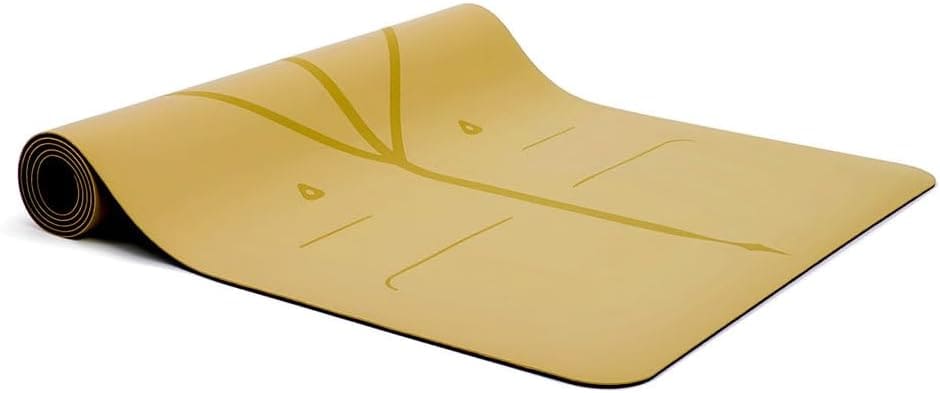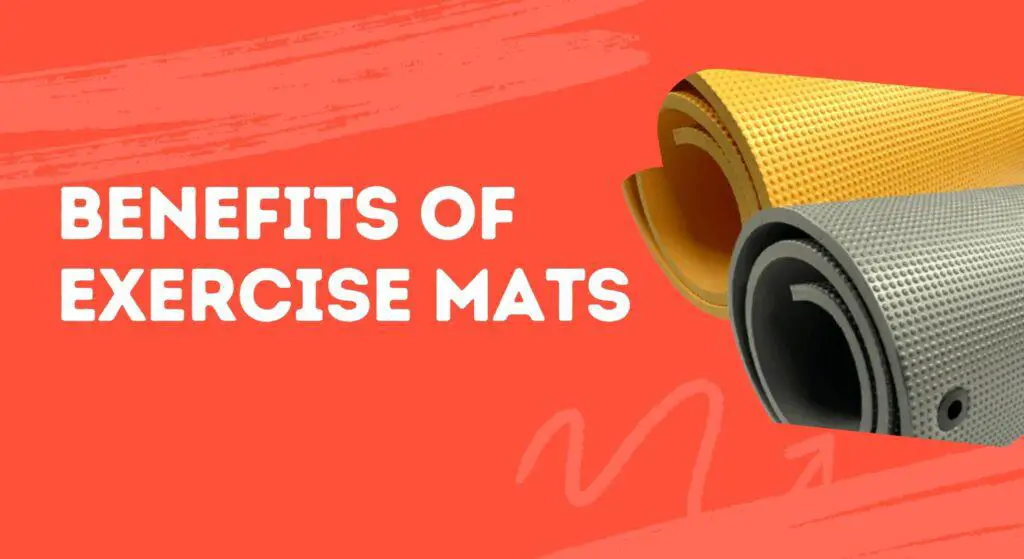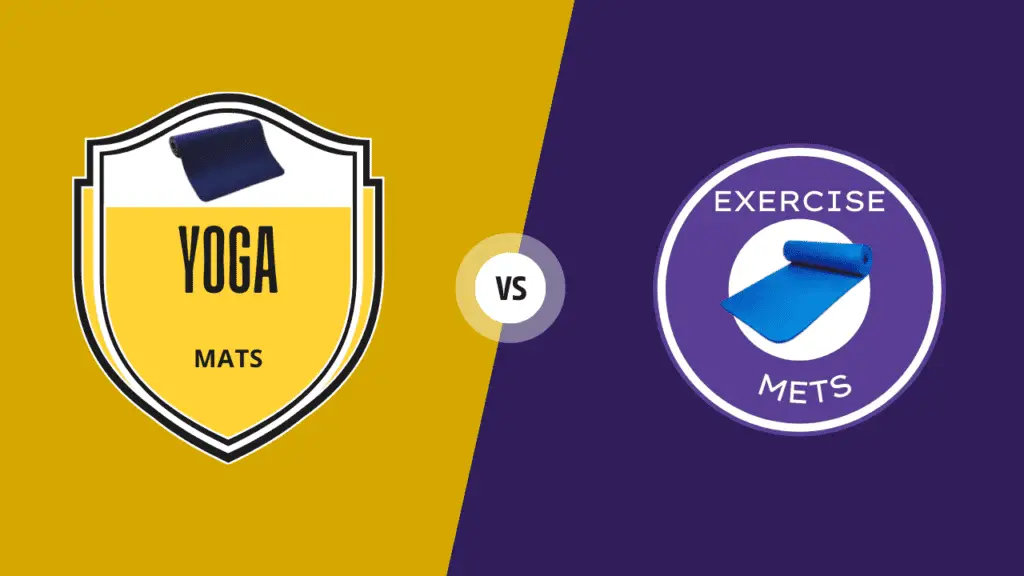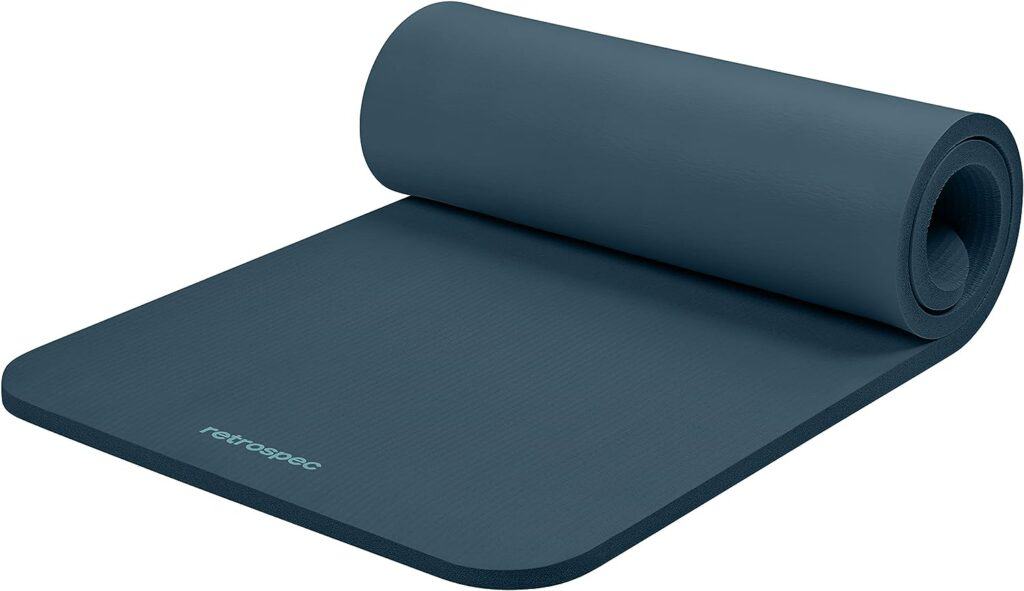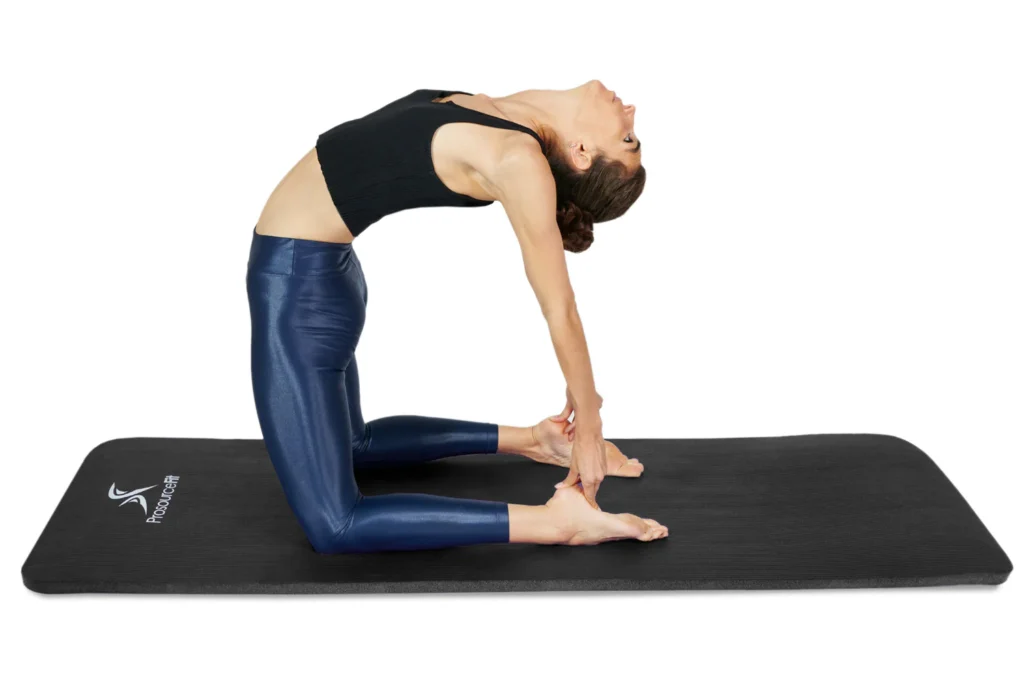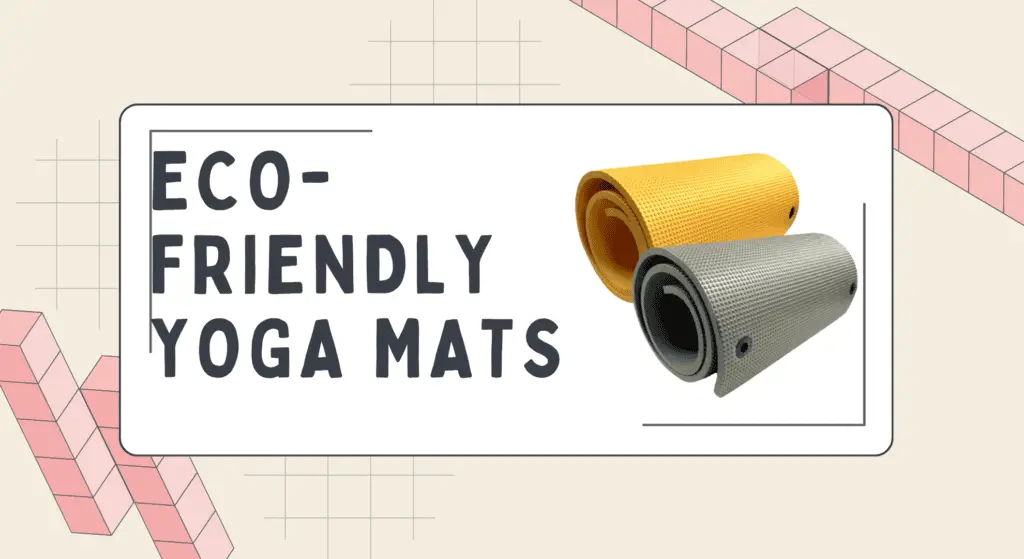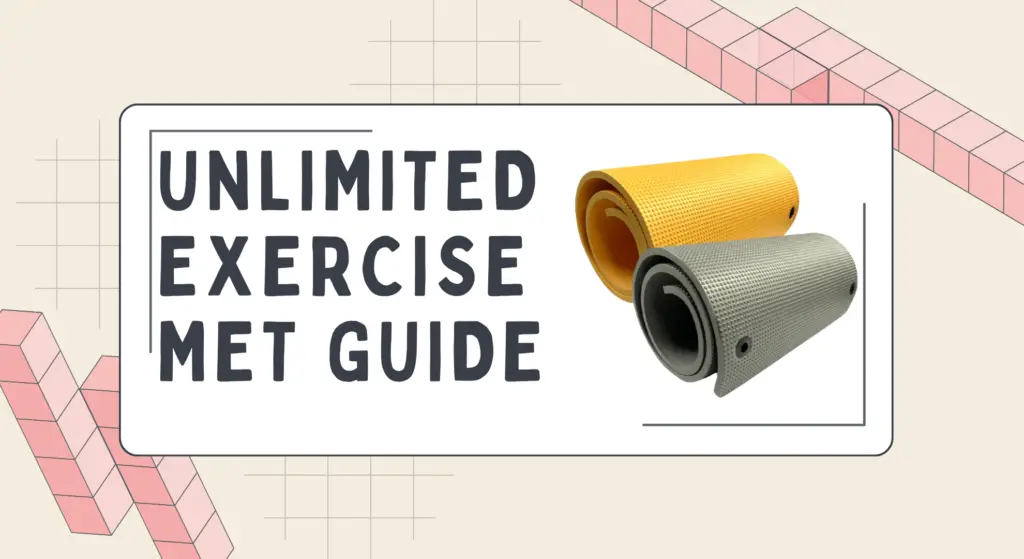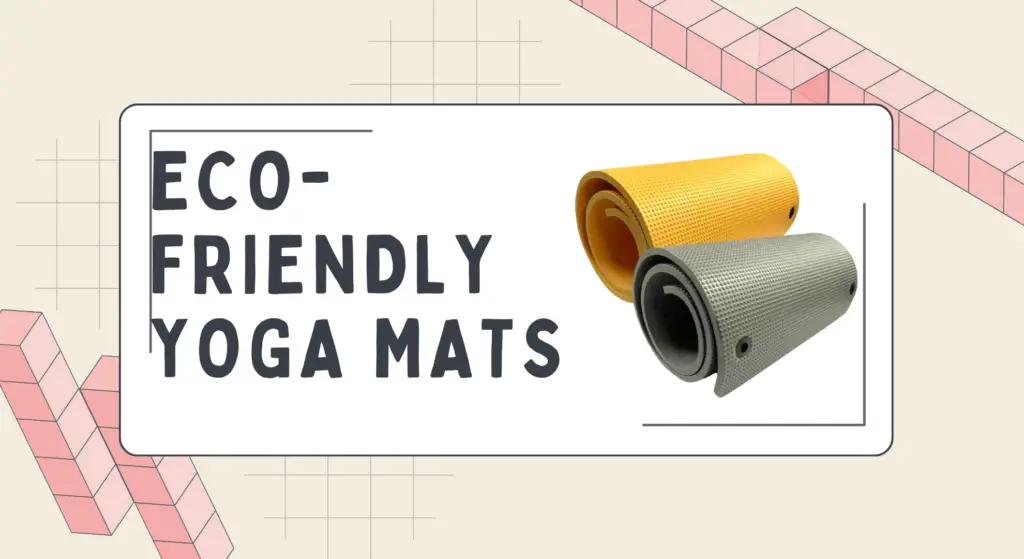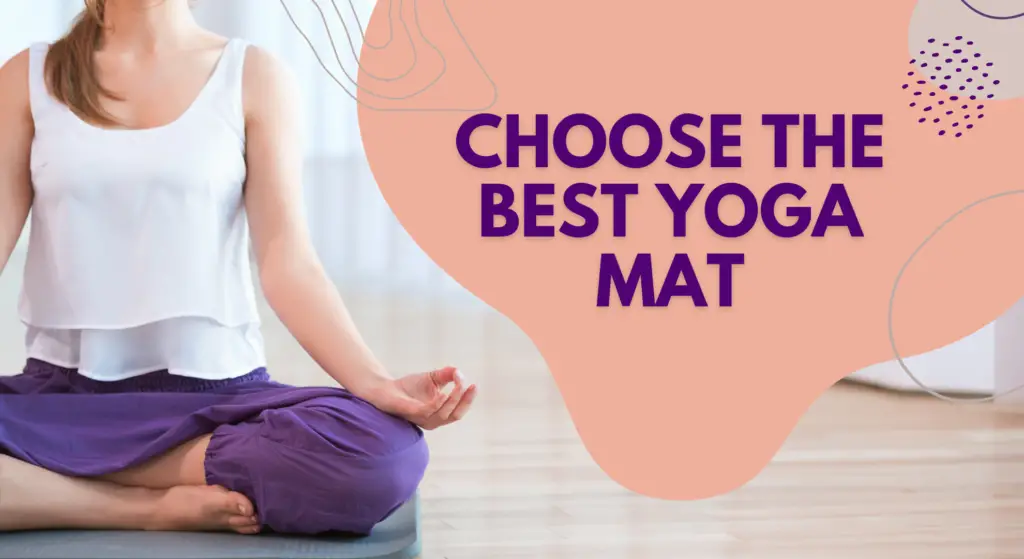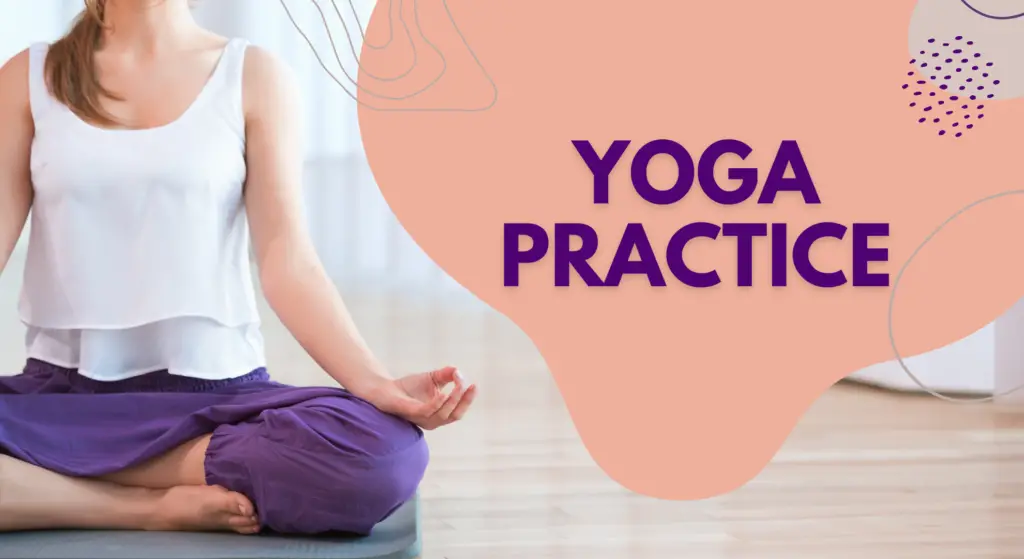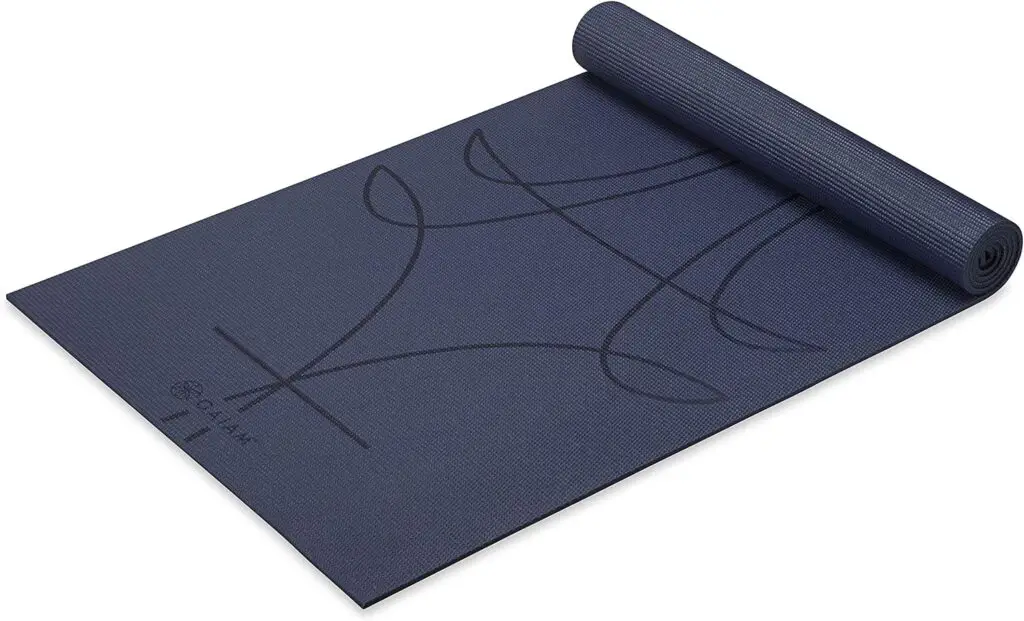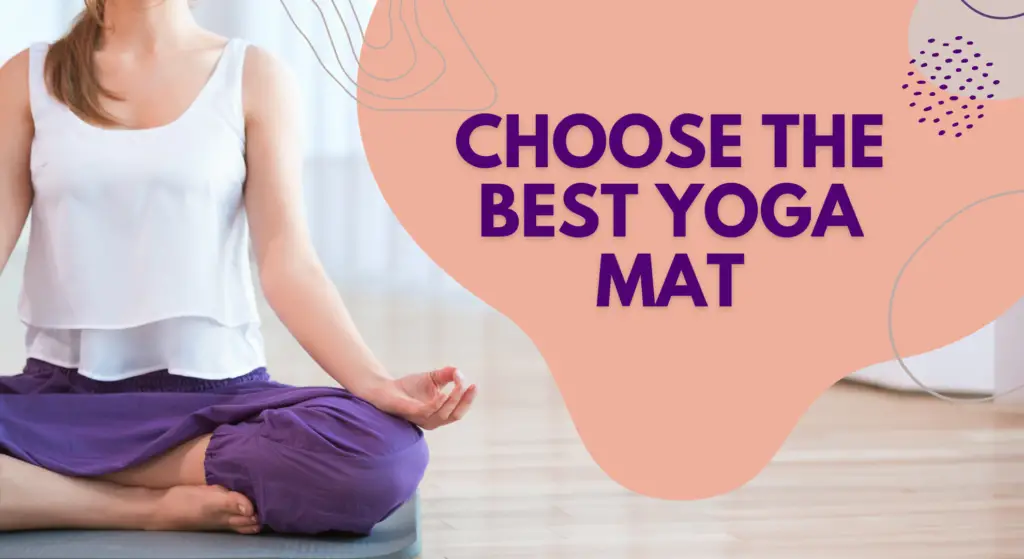
As an avid hot yogi who practices Bikram, CorePower, and other heated styles 4 to 5 times per week, I know firsthand how important having the right yoga mat is. Cheap, flimsy mats just won’t cut it for hot yoga where you and the mat become drenched in sweat within minutes.
After testing countless mats over the past 5 years, I’ve compiled this list of the top 7 best yoga mats that can withstand hot yoga and keep you stable, grounded, and supported during your practice. I carefully evaluated each mat on the following key criteria:
Below I dive into the pros, cons, and ideal use cases for each excellent mat option for hot yoga. I also cover care tips to keep your mat clean and grippy. Read on to find your perfect non-slip, sweat-proof yoga mat for flowing in the heat!
Comparison Table of the Top 7 Yoga Mats for Hot Yoga
| Yoga Mat | Price | Grip (Wet) | Thickness | Materials | Absorbency | Weight | Eco-Friendly | Special Features |
| Jade Harmony Mat | $$ | ⭐⭐⭐⭐⭐ | ⭐⭐⭐⭐ | Natural Rubber | ⭐⭐⭐⭐ | ⭐⭐ | ⭐⭐⭐⭐ | Excellent grip |
| Liforme Yoga Mat | $$$ | ⭐⭐⭐⭐⭐ | ⭐⭐⭐ | Polyurethane | ⭐⭐⭐ | ⭐⭐⭐⭐ | ⭐ | Alignment markers |
| YOGO Ultralight Mat | $ | ⭐⭐ | ⭐ | PER | ⭐⭐ | ⭐⭐⭐⭐⭐ | ⭐⭐⭐⭐⭐ | Ultra portable |
| Hugger Mugger Para Rubber Mat | $$ | ⭐⭐⭐⭐ | ⭐⭐⭐⭐⭐ | Natural Rubber | ⭐⭐⭐⭐⭐ | ⭐⭐ | ⭐⭐⭐ | Maximum cushion |
| Manduka PROlite Mat | $$$ | ⭐⭐⭐⭐ | ⭐⭐⭐⭐ | Natural Rubber | ⭐⭐⭐ | ⭐⭐⭐ | ⭐⭐ | Multi-purpose |
| Lululemon Reversible Mat | $$ | ⭐⭐⭐ | ⭐⭐⭐⭐ | Polyurethane + Rubber | ⭐⭐ | ⭐⭐⭐ | ⭐ | Fashionable prints |
| Cork Yoga Mat by EcoYoga | $$ | ⭐⭐⭐⭐ | ⭐⭐ | Organic Cork | ⭐⭐⭐⭐ | ⭐⭐⭐ | ⭐⭐⭐⭐⭐ | Sustainable material |
In-Depth Yoga Mat Reviews for Hot Yoga
#1. Jade Harmony Yoga Mat in depth reviews
PROS
CONS
Ideal For:
Hot yogis looking for amazing grip and stability during intense practice. It’s the gold standard for grip among the mats I tested.
With its specially engineered open-cell rubber material, the Jade Harmony mat has the best-wet traction out of all the mats I tried. The textured surface helps keep you stable during hot power flows, even in tricky poses like crow. It’s on the thicker side at 4mm, offering plenty of knee and joint padding for sensitive areas. Just note the natural rubber does have an odor that takes a few weeks to fade. Overall an exceptional non-slip mat purpose-built for hot yoga.
#2. Liforme Yoga Mat review
PROS
CONS
Ideal For
Hot yogis who want extra alignment cues built right into their mat. The Liforme is ideal for perfecting your poses.
The Liforme mat is on the pricier side but delivers outstanding performance. The patented “GripForMe” material gives an incredibly sticky, non-slip surface, even during sweaty flows. At 4.2mm thick, it offers great support and knee padding. The printed alignment markers are brilliant for ensuring correct poses and technique. With its sweat-wicking abilities, this is a top-notch mat, albeit not the most eco-conscious choice.
#3. YOGO Ultralight Travel Yoga Mat Review:
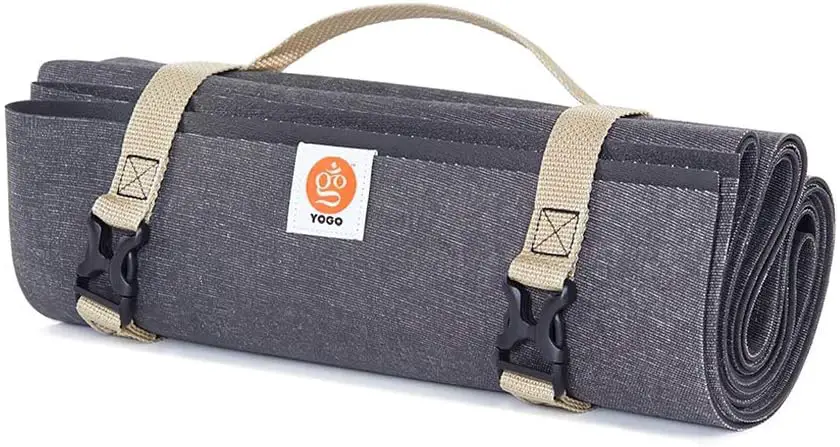
PROS
CONS
Ideal For:
Hot yogis seeking an affordable, ultra-portable mat for travel or lighter classes.
Weighing just 2 lbs, the YOGO Ultralight is a great portable mat for hot yoga on a budget. It rolls up tightly and comes with a convenient carrying strap. While not the grippiest when soaked, the moisture-wicking material does absorb sweat decently. With a minimal 1.5mm thickness, this mat provides enough grip and padding for lighter flows but likely won’t suffice for high-intensity heating. For an ultra-packable yet budget-friendly hot yoga mat, the YOGO is a great option.
#4. Hugger Mugger Para Rubber Yoga Mat reviews:

PROS
CONS
Ideal For:
Hot yogis concerned with joint issues who want maximum cushioning and grip. It’s the thickest, most supportive mat I tried.
With an ultra-thick 6mm padding, the Hugger Mugger para rubber mat is ideal for joint protection and comfort. It has incredible absorbency, soaking up sizable pools of sweat. The textured rubber surface remains grippy and steady even through vigorous flows. While heavy, this mat is unbeatable for cushioning sensitive joints and keeping you grounded during practice.
#5. Manduka PROlite Yoga Mat review:

PROS
CONS
Ideal For
Hot yogis seeking a comfortable, portable, multi-purpose mat. Breaking it in does take time.
The Manduka PROlite is a high-performance mat that offers great cushioning and an ideal blend of grip and lightness once properly broken in. It provides dense 4.7mm support without an excessive weight penalty. With its OKEO-TEX-certified materials, it’s a healthy choice as well. Just bear in mind it does take some use to develop maximum traction and absorbency. With patience, it delivers an excellent hot yoga experience.
#6. Lululemon Reversible Yoga Mat reviews

PROS
CONS
Ideal For
Fashion-conscious yogis seeking a lightweight, reversible mat for dryer classes and travel.
Lululemon’s Reversible mat is stylish and combines natural rubber and polyurethane for decent dry traction. At 5mm thick, it offers reasonable support and padding for less intense classes. The colorful patterns and prints will satisfy your sense of style. On the downside, moisture does compromise its grip significantly. But for travel or gentler hot yoga, it’s a solid lightweight pick.
#7. EcoYoga Cork Yoga Mat reviews
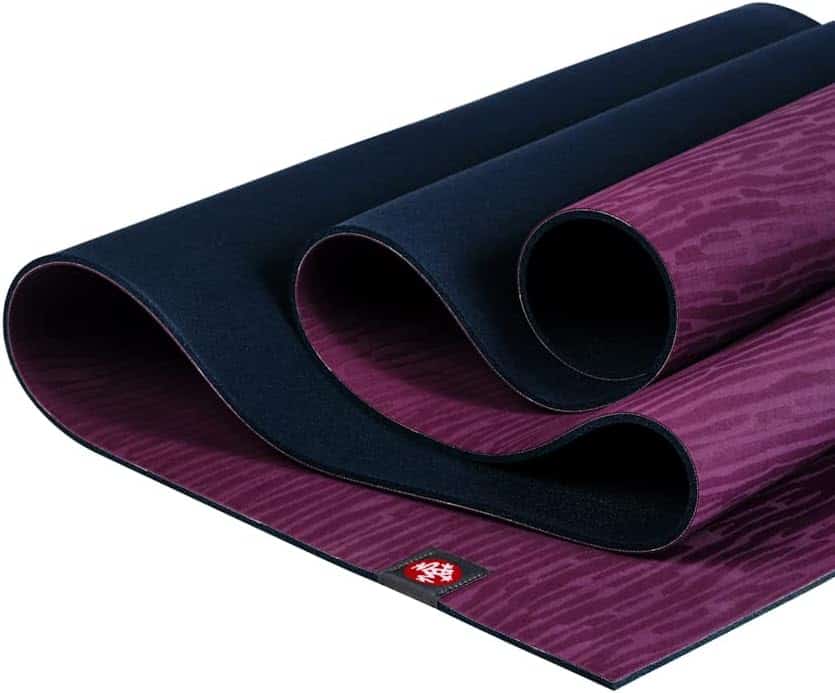
PROS
CONS
Ideal For:
Eco-conscious yogis seeking a sustainable cork option. It offers a decent grip for lighter sweat levels.
For the earth-friendly yogi, EcoYoga’s cork mat is a great sustainable choice. Naturally, antimicrobial cork soaks up moisture well and stays springy underfoot. Made using recycled rubber, zero toxins, and renewable resources, it’s ideal for gentler hot yoga practices where grip isn’t as crucial. With proper maintenance, the textured cork surface provides adequate traction but does lose stability when thoroughly saturated. A thoughtful eco-pick nonetheless.
Buyer’s Guide: Key Factors for Choosing a Hot Yoga Mat

Selecting the right yoga mat for hot yoga involves evaluating some key factors and requirements: more…
Grip – The mat absolutely needs to remain steady and grippy when thoroughly soaked in sweat. Seek out mats made with natural rubber, silicone, or specially engineered textures.
Cushioning – More padding protects joints but can increase weight. Look for mats that are 4-6mm thick to support knees, hips, and wrists.
Materials – Natural rubber, PER, TPE, and polyurethane are suitable hot yoga materials that absorb moisture well. Avoid cheap PVC and basic foam mats.
Absorbency – Ensure the mat quickly soaks up sweat and prevents pooling. Materials like open-cell rubber excel at sweat absorption.
Weight – In general, thicker and heavier mats are more stable. But lighter mats under 5 lbs are preferable for regular transport. Find the right balance.
Portability – If traveling to yoga class, opt for thinner, lightweight mats that tightly roll or fold into a carry case or strap.
Eco-Friendliness – Consider sustainability. Many modern mats use natural biodegradable rubber, plant-based materials and non-toxic manufacturing.
Special Features – Options like alignment markers, a carrying strap and bold colors/patterns might sway your decision.
Budget – Yoga mat prices span from $20 to $150+. Let your needs and hot yoga frequency determine how much to spend.
5 Tips for Caring for Your Yoga Mat
To keep your yoga mat in top shape for hot yoga: learn more
The Takeaway: Best Yoga Mats for Sweaty Hot Yoga
If hot yoga is your regular practice, having the right mat can truly enhance your flow. For unbeatable grip, excellent sweat absorption and stability when the heat is cranked up, I highly recommend the Jade Harmony or Manduka PROlite mats. Both offer superb traction and padding.
For yogis focused on joint support, the ultra-cushioned Hugger Mugger provides unmatched shock absorption and stability. Liforme is ideal for perfecting your alignment with its built-in visual cues. And for an eco-conscious choice, EcoYoga’s cork mat is sustainably sourced and sufficiently grippy when dry.
I hope this in-depth review of the top yoga mats for sweat-soaked hot yoga assists you in finding your perfect match. Please drop me a comment if you have any other questions! Stay cool and keep flowing

